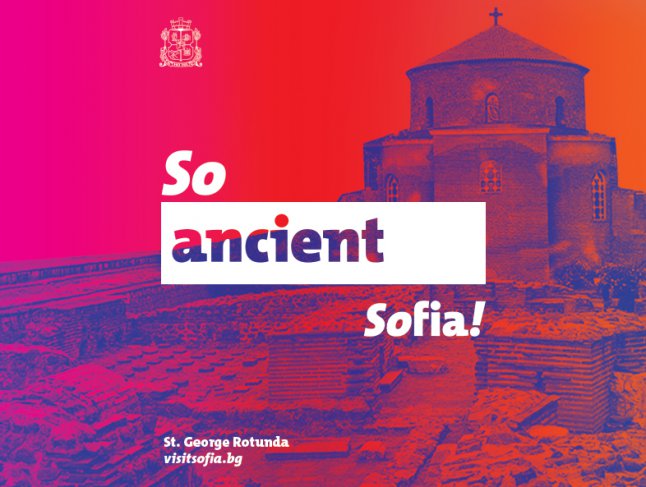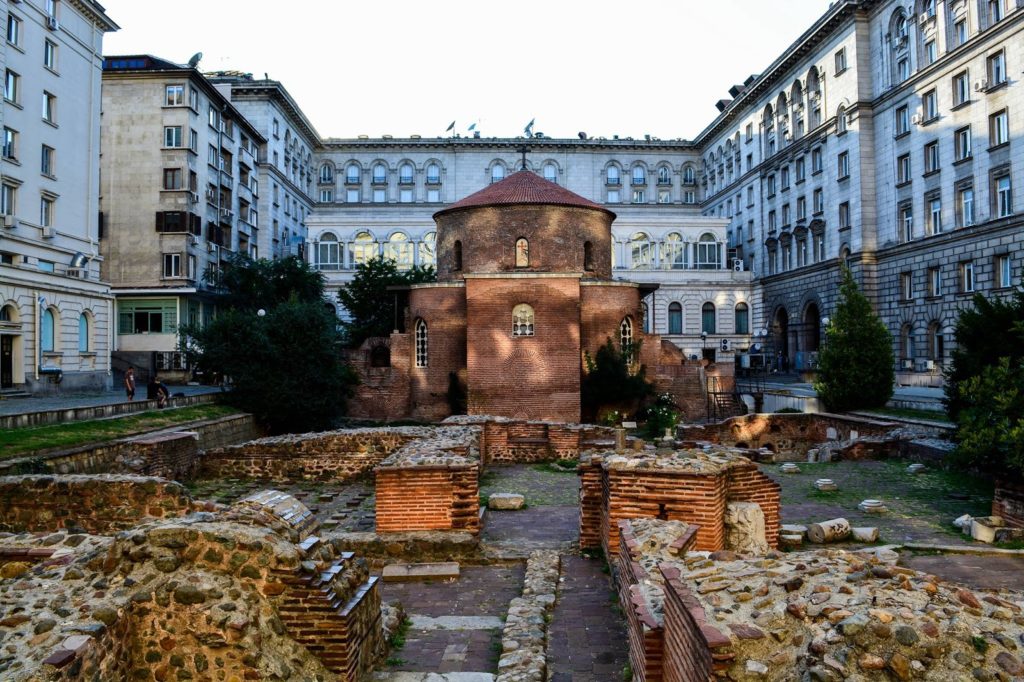While crossing the streets of Sofia, waiting for the underground trains, or simply buying a coffee it is hard to miss the bright posters. The “So Sofia” campaign is everywhere.
This is a campaign to promote the capital city of Bulgaria as a welcoming and vibrant tourist destination. The local authorities have developed six themes with a unique set of cultural highlights. They follow the same “So Sofia” formula, which is a word game. It comes from the first two letters in (So)fia, used as an exclamation (!) of surprise. The themes are:
“So Welcoming Sofia!”; “So Green Sofia!”; “So Innovative Sofia!”;
“So Creative Sofia!”; “So United Sofia!”; and “So Ancient Sofia!”.
The last one puts an emphases on the archaeological heritage and ancient roots of the city. The poster shows an image of the Rotunda of St. George – a small round church, built with deep-red bricks. Looking at it, absorbed in the orange-red glow that surrounds it (and matches the color of the bricks) I started to think that the Rotunda is an excellent choice to represent this theme well.
There are numerous age-old stones and artefacts in the city that could look nice on the poster too, but none could convey the same sense of historical depth and endurance better than this humble building. I can come up at least with three reasons that support the Rotunda’s claim for being an ambassador for cultural heritage – let me try to persuade you:
The Oldest Building in Sofia
To begin with, the Rotunda is very old. Ancient! It was built in the early 4th century AD by the Roman Emperor Constantine the Great. This Emperor is well known for issuing the Edict of Milan in 313 AD putting an end to the Christian prosecutions and forever changing the Empire. As he started to spend more and more time in Serdica (the Roman name of Sofia) he undertook major reconstructions in the city. Constantine built a large complex for himself and his family, including the Rotunda. The archaeologists call it Constantine district because it occupied a whole quarter of the defended area, inside the fortress walls.
The Rotunda was used at first as a ceremonial hall but later had been converted into a Christian temple. Its round shape was not an exception in the complex. Just the opposite, it was a repetitive form. There were at least four other buildings with circular interior and three with octagonal. Following the Christian tradition all of them were oriented in an East-West direction with their main axis. They were adjacent to spacious halls for emperor’s guests and all of them were equipped with the Roman floor heating system, the so called hypocaust.
For your disappointment, today most of the Constantine district lays hidden under nowadays streets and buildings. All that has been discovered is some sort of a ruin: collapsed walls of former magnificent halls, fragments of columns, worn out stones of the street pavement. On the ground you can still see the arched tunnels of the hypocaust where once the hot steam had been pumped. In contrast, the Rotunda stands out as a complete building, miraculously untouched through the ages, and the only survived piece (together with the roof) from the once splendid Constantine district. This makes it the oldest building in Sofia.
Still in Use
Today the Rotunda looks lonely and isolated. If you want to visit it you have to enter the inner courtyard of the Presidential office – the former headquarter complex of the Bulgarian Communist Party. This is a massive, monumental building that surrounds the Rotunda at four sides. An ancient church has no place in the center of a communist capital, so the Rotunda was put behind a huge architectural curtain. The reason was to protect it (or to hide it).
But I prefer to reveal its location in a different light. The ornamented gates of the courtyard look like frames to me that outline the site. The infinite rows of grey vaulted widows of the back facades serve as a neutral background and the Rotunda stands out with its warm brick colors. Approaching it feels like entering a museum hall under the plain sky.
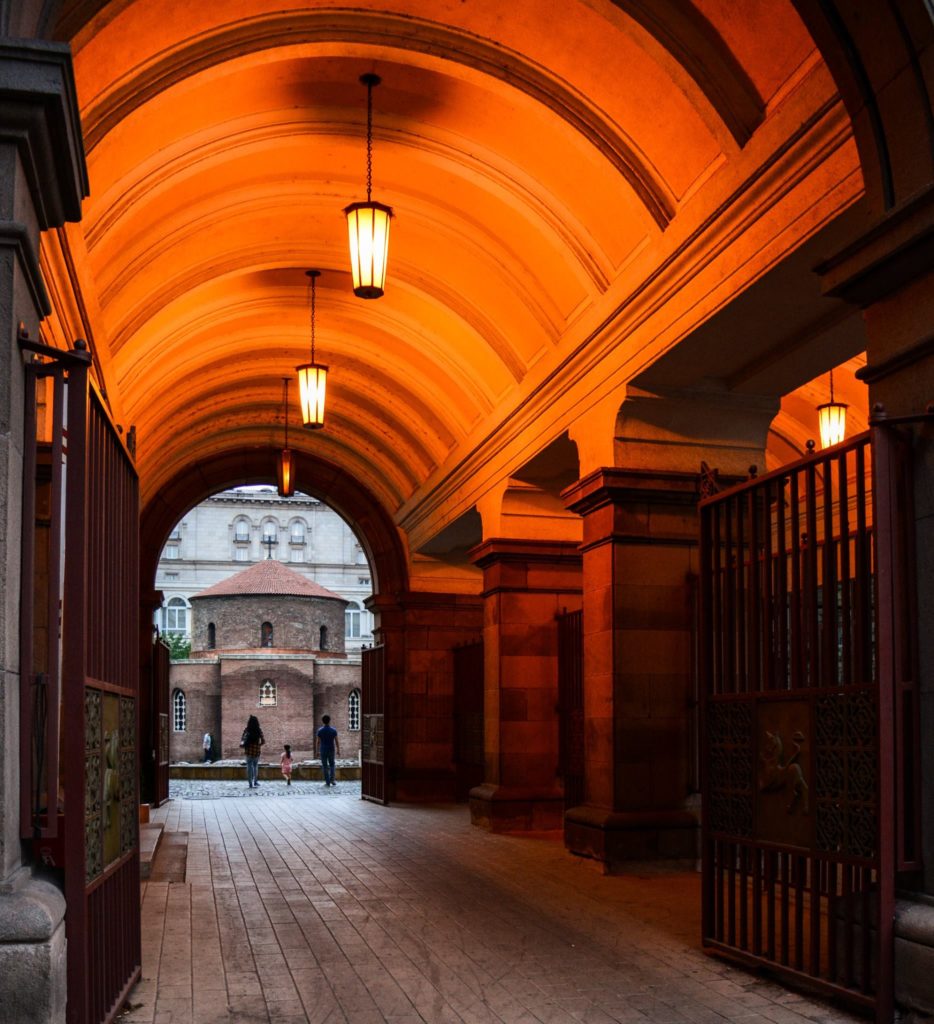
Photo: Sketches of Sofia
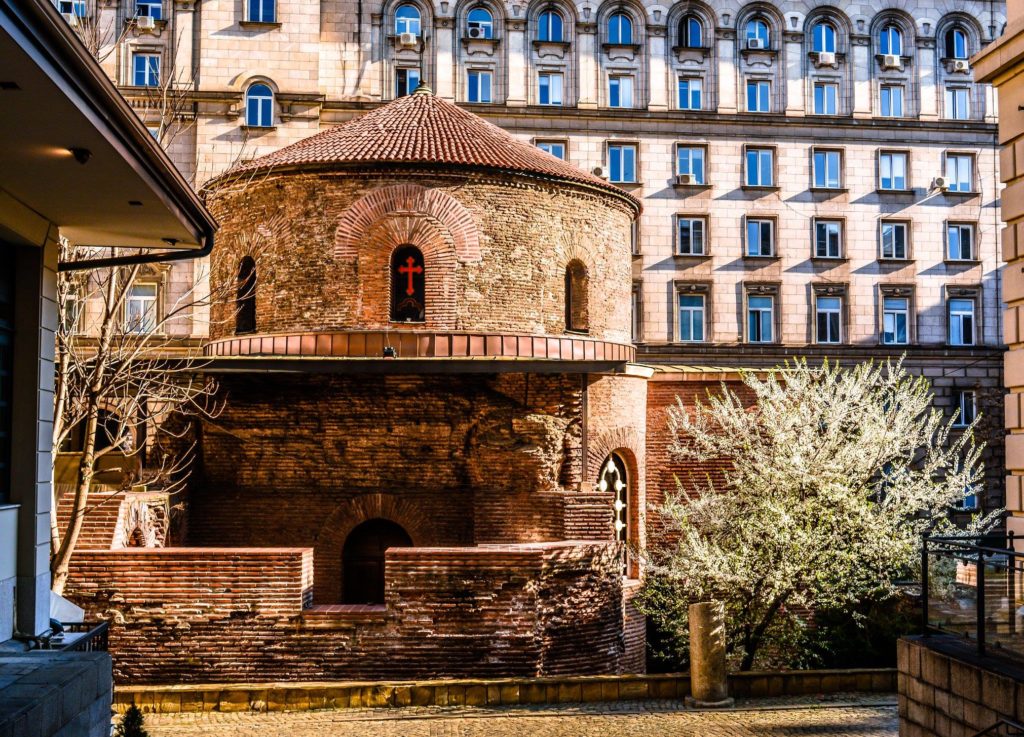
Photo: Sketches of Sofia
Note the exception, the Rotunda is not a museum exhibit. It is still in use, rather being a pile of preserved bricks. It is functioning as an Orthodox church with an excellent choir. And it is a very busy one. It is not uncommon to find a crowd gathered for a wedding or a baptism of a child. Or perhaps you would hear the elegant chants of a commemorative service. The Rotunda continues to benefit the city and its people in an aura of tradition and authenticity.
Witness of Change
With a brief visit to this small round church you can follow centuries of transformation. Every big change that happened in Sofia has left its mark on it. This is best seen inside where the true charm of the Rotunda awaits you.
The interior is specious. It has a circular plan, enlarged with four arc-shaped niches, closed with a wide dome (9.75 m in diameter and 14 m in height). On the walls you can see a mixed composition of five wall painted layers, representing different periods of ownership and mastery of the craft. They are going one on top of the other, hiding and revealing flying angels, biblical scene, and Old Testament prophets.
The earliest layer is from 6th century when the Rotunda was inaugurated as a Christian temple and first painted. There are two layers form the Bulgarian medieval Kingdoms of 9th and 14th centuries. Between them lays a Byzantine layer of 12th century. There is also a painted layer with flowers from the time when the Rotunda had been converted into a mosque during the Ottoman rule of 16th century.
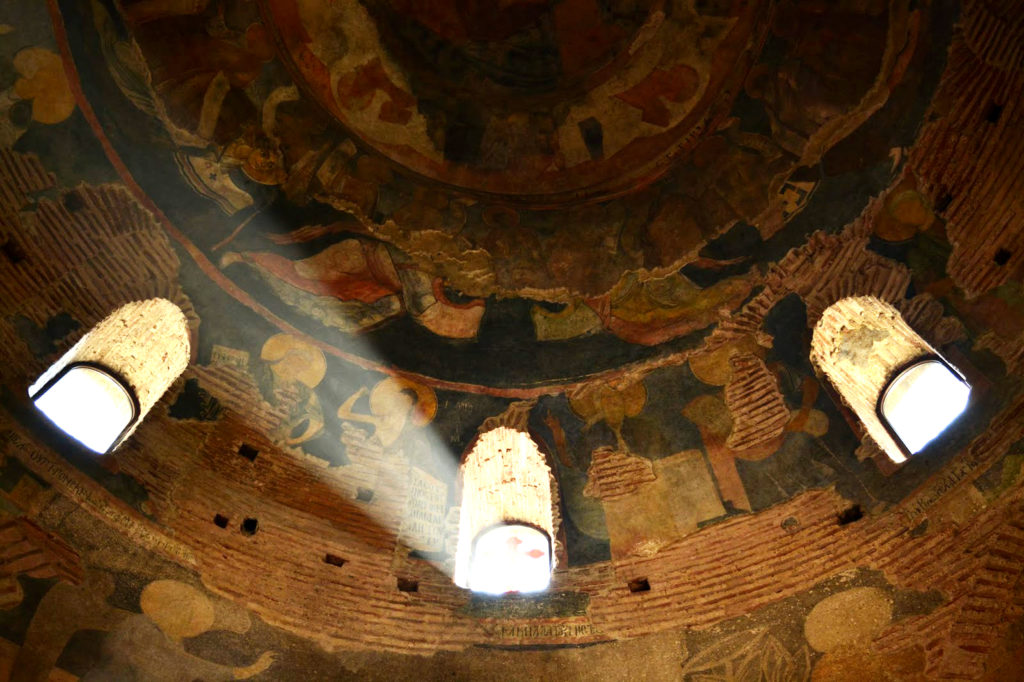
Photo: Sketches of Sofia
The local authorities claim that the idea for the “So Sofia” formula is a result of interviews with foreign tourists. It has been reported that many of them had genuinely exclaimed: “So Ancient Sofia!”.
I tend to believe it.
XXXXXXXXXXXXXXXXX